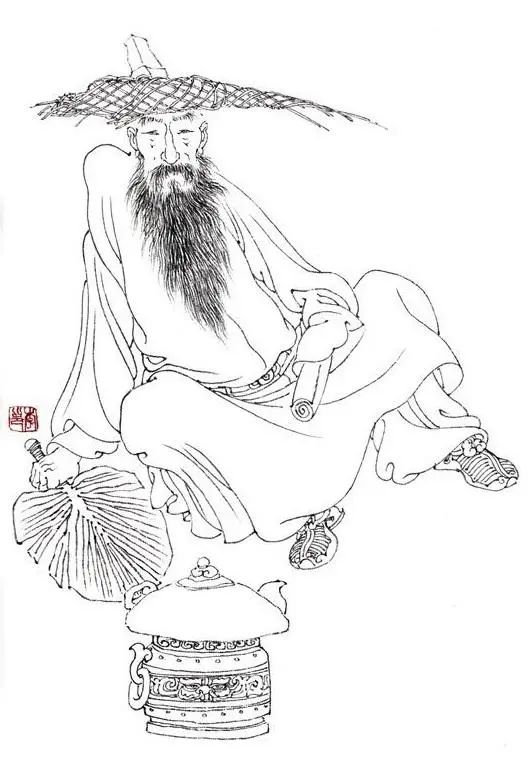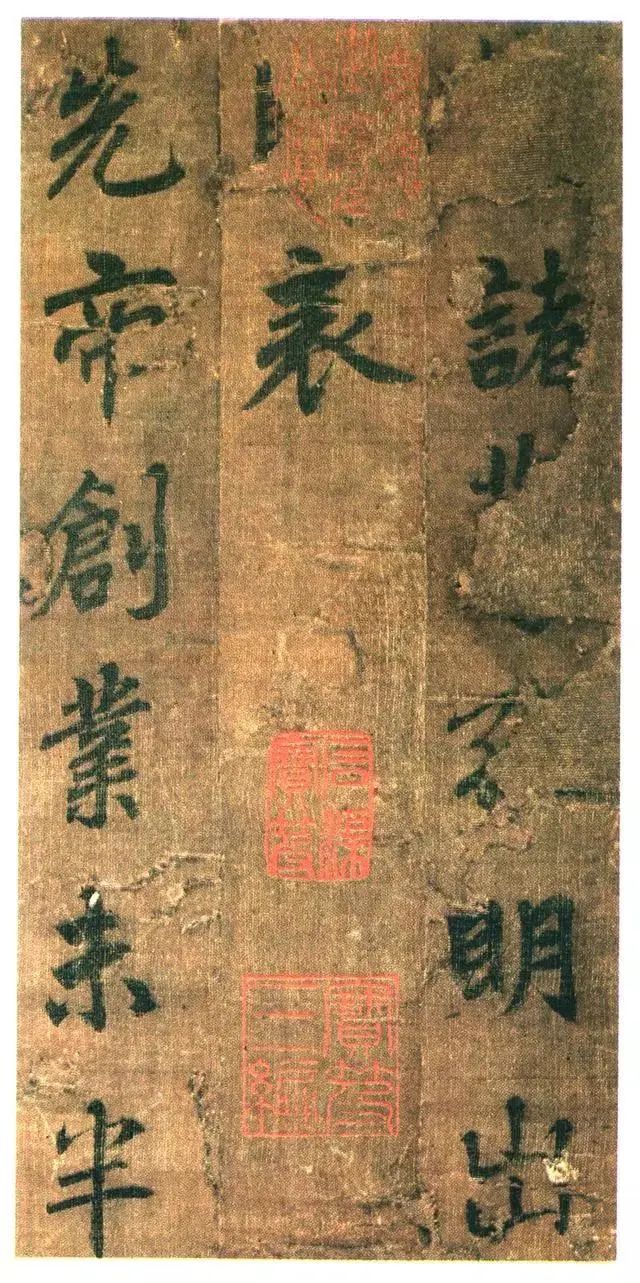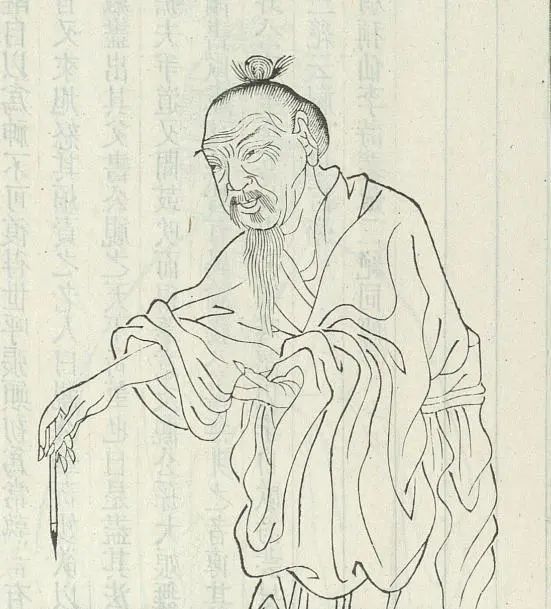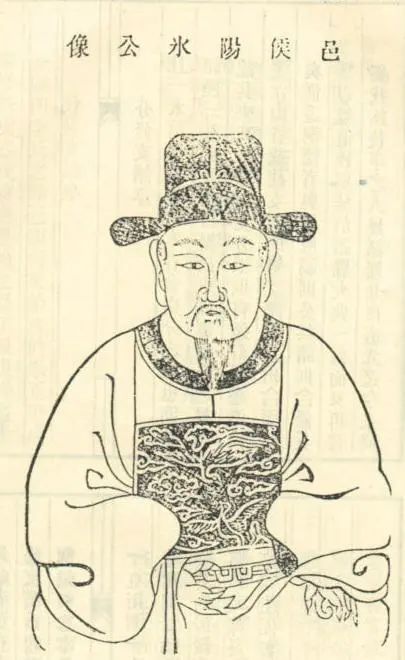The five calligraphy fonts of Kai, Xing, Cao, Li and Zhuan were greatly developed and perfected in the Tang Dynasty, presenting a thriving situation. How did the art of calligraphy in the Tang Dynasty develop?
01. The innovation of regular script breaks through the shackles of tradition and becomes more mature
In the early Western Han Dynasty, regular script evolved from official script to an independent script. After the Wei, Jin, Southern and Northern Dynasties, regular script continued to develop, but it still did not break away from the influence of Han Li in terms of strokes and style. It was not until the Tang Dynasty that regular script developed and matured. Among them, calligraphers such as Yan Zhenqing made outstanding contributions.

Yan Zhenqing
Yan Zhenqing broke through the calligraphy pattern of the early Tang Dynasty and even the heyday, and became a school of his own in calligraphy, creating his own "Yan Style". "Yan Ti" is vigorous and strict, open-minded, powerful, and majestic. Ouyang Xiu, a litterateur in the Northern Song Dynasty, spoke highly of Yan Zhenqing, "Si people are loyal and righteous by nature, so their calligraphy and painting are strong and independent, not following the previous traces, and they are quite majestic, resembling him as a human being."
Zhu Changwen, a calligrapher theorist in the Northern Song Dynasty, wrote in "Continued Book Breaks", "A dot is like a falling stone, a painting is like a summer cloud, a hook is like a bent gold, and a spear is like a crossbow. Since Xi and Xian, there has never been one like the public." It can be seen that Yan Zhenqing's regular script is majestic, unique in style, and has extremely high artistic value. This is mainly because he broke through the shackles of tradition and boldly innovated.

Part of Tang Yan Zhenqing in "Zhushan Tang Lianju"
 Part of Tang Yan Zhenqing in "Zhushan Tang Lianju"
Part of Tang Yan Zhenqing in "Zhushan Tang Lianju"
02. The innovation of running script, not sticking to the old method, has reached a new artistic height
Red script is a style of calligraphy between regular script and cursive script. It originated in the Western Han Dynasty, formed in the Eastern Han Dynasty, and achieved great development during the Wei, Jin, Southern and Northern Dynasties. Famous calligraphers such as Wang Xizhi and Wang Xianzhi appeared. In the Tang Dynasty, running script continued to develop and reached new artistic heights, such as Li Yong's calligraphy.

Li Yong
Li Yong also imitated Wang Xizhi's calligraphy when he first started learning, which can be seen from "Xuanhe Shupu", "The origin of Guan Yong's ink marks is actually from Xizhi. If Yiyi has supernatural power, his name is not superficial." However, Xiang Mu in the Ming Dynasty said in "Calligraphy Elegant Words", "Although there are three changes in Tang Shu, Yu and Chu Zhizhen and Xingcao, Lu and Li Zhixingcai, Lu Gong's Xingcao, Rate Geng's authentic book, Changshi's flying grass, so-called outstanding. , so you are not a follower." The "Lu and Li Zhixingzhen" here refers to the regular script of Lu Jianzhi and Li Yong. It can be seen that Li Yong did not stick to the old methods in running script, but dared to make bold innovations.
Lv Zong, a scholar of the Tang Dynasty, said in the "Continued Book Review", "Li Yong's calligraphy, three peaks of Huashan, and a song of the Yellow River", it can be seen that Li Yong's running script has the characteristics of steep, dangerous, majestic, wanton and smooth. Zhu Changwen also made such an evaluation in "Continued Books", "Yong's script is like a magnanimous elder, meandering and unrestrained, and finally returning to the law, and the one with the best quality." This shows that Li Yong's running script is majestic, flying and calm. It can be seen that Li Yong's running script has high artistic value and has been widely praised.

Part of Tang Liyong in "The List of Teachers"
 Part of Tang Liyong in "The List of Teachers"
Part of Tang Liyong in "The List of Teachers"
03. The innovation of cursive script has evolved from Zhangcao to Jincao and Kuangcao, developing rapidly
Cursive script was formed in the Western Han Dynasty and was called Zhangcao at that time. During the Wei, Jin, Southern and Northern Dynasties, through the innovation of Wang Xizhi and others, Zhangcao evolved into the present grass. In the Tang Dynasty, the art of cursive script developed rapidly, and wild cursive script appeared. The wild grass is continuous, circling, unrestrained, wild and uninhibited, with a high degree of artistry and strong romanticism. In the Tang Dynasty, there were many people who were good at cursive script, such as Zhang Xu.

Zhang Xu's achievements are mainly reflected in his bold innovations in traditional cursive script. First of all, in terms of brushwork, Zhang Xu pioneered the connection of the whole line. In the cursive script of the Wei, Jin, Southern and Northern Dynasties, there are generally only 5 or 6 characters connected together, but in Zhang Xu's "Tummy Pain Tie" and other cursive works, there are entire lines connected together, which is unprecedented.
Secondly, in terms of style, Zhang Xu's cursive script is more elegant and wild than the previous generation of cursive script. Cai Xizong, a calligrapher of the Tang Dynasty, recorded in "Fa Shu Lun", "Recently, Zhang Xu, the governor of the government, was outstandingly isolated, his voice was surrounded by the world, and his imagery was so strange that he could not fail to complete his ancient system, and Wang (Wang Xizhi) Nei Mi was even less Province, there may be a hundred characters and five crosses, the characters are not shaped, and the majestic atmosphere is the verticality of the sky. After taking advantage of the excitement, the brushes are scattered, either on the wall, or on the screen, and the group of images will form itself, as if fly...". It can be seen that Zhang Xu's cursive script is unrestrained, unrestrained, vivid and vivid, and its artistry exceeds that of the previous generation.

"Stomach Pain Post" Tang Zhangxu
04. Han Zemu made great contributions to the revival of official script
As we all know, official script was formed in the Western Han Dynasty. However, there were two revivals of official script, namely Tang Dynasty and Qing Dynasty, which were called Tang Li and Qing Li in history. Although Tang Li's artistic achievements are not as good as those of Qing Li, there are still things worth talking about.

Han Zemu
Among them, Han Zemu made a great contribution to the revival of official script and achieved the greatest achievement in official script calligraphy. "Xuanhe Shupu" describes Han Zemu in this way, "Cai Yong is the only one who is the master of Lixue. Chomu can follow his legacy. He is romantic and charming, and the world calls Cai Yong Zhongxingyan." In addition, in "Shu Shu Fu", it is also written, "Han Shichang is eight-point ZTE, and Bo Jie (Cai Yong) is like him; the beauty of light and harmony, the iteration of ancient and modern times. Zhao carved stones to become famous, the crown of the city of gods." It can be seen that Han Zemu's official script is widely praised. In the eyes of the world, he is a famous calligrapher who can be compared with Cai Yong, a famous Hanli master.
"Ye Huiming Stele" is Han Zemu's proud work. Its calligraphy is dignified, stable, delicate and elegant, with vivid and smooth charm, which is a masterpiece in Tang Li. In addition, his "Gaohua Yue Wen Stele" and "Great Virtue Precepts Poetry Stele" are also good official script works.

Part of "Ye Huiming Monument" selected by Tang Han
05. Li Yangbing made a key impact on the revival of seal script
Seal script originated in Qin Dynasty and developed in Han Dynasty, but it was gradually neglected by the world, and it can only become a major studied by ancient philologists.
Seal script, from the Qin Dynasty to the Sui and Tang Dynasties, the seal script has declined. But among them, there was a Tang Dynasty calligrapher named Li Yangbing, who made a key influence on the revival of seal script, and extended this influence to the Qing Dynasty and even modern times.

Li Yangbing
In order to revive the seal script, Li Yangbing, on the one hand, earnestly studied the seal script art of Li Si and others, extensively absorbing the essence of traditional calligraphy art. On the other hand, they study carefully and focus on innovation. He changed the outline and neat style of Li Si's seal script, showing a slight sharp edge at the beginning and end of strokes, so that the seal script looks vigorous and powerful.
Lv Zong, a scholar of the Tang Dynasty, said in the "Continued Book Review", "Yangbing seal script, if an ancient hairpin leans on something, it is powerful. After Li Si, there is only one person." He also said: "After Li Si, only Yang Bing is good at Xiaozhuan. I have seen the authentic works, and the beginning and end of the calligraphy and painting are all slightly exposed. Looking at it in the sun, the ink in the center is thicker. The pen is powerful and straight down. No drums, so the front is always in the painting." It can be seen that Li Yangbing has indeed a high attainment in seal script, and he can be called a generation of seal script masters.

"Yiting Ming" rubbings Tang Li Yangbing
06. Summary: The development of Kai, Xing, Cao, Li and seal script in the Tang Dynasty was the result of the joint efforts of calligraphers
In addition to the rapid development of various calligraphy styles, calligraphy theory works also emerged in the Tang Dynasty. The Tang Dynasty wrote a large number of calligraphy theory works, and the depth of the interpretation content was beyond the reach of the previous dynasties, and it was also beyond the reach of the Song, Yuan, and Ming Dynasties. Among them, the famous theoretical works of calligraphy include Ouyang Xun's "Theory of Using the Brush", Yu Shinan's "On the Essence of the Brush", Zhang Huaiguan's "On the Ten Methods of Using the Brush", Yan Zhenqing's "Twelve Ideas of Zhang Changshi's Brushwork", Lu Zong "Continued Book Review" and so on.
It can be said that the prosperity and development of the five calligraphy font arts of Kai, Xing, Cao, Li and Zhuan in the Tang Dynasty is inseparable from the joint efforts of various calligraphers in the Tang Dynasty.
Hello, dear
Please add Xiaozhou Wenfang customer service WeChat:dt7860
1. Teach you how to distinguish the difference between a good pen and a bad pen
2. Understand the knowledge of brushes, start a brush, how to maintain a brush
3. Participate in new product experience and new spike activities
It doesn't matter whether you buy a brush or not, acquaintance is fate, and we will exchange and learn from each other later
Articles are uploaded by users and are for non-commercial browsing only. Posted by: Lomu, please indicate the source: https://www.daogebangong.com/en/articles/detail/5%20fonts%203%20innovations%202%20revivals%20how%20calligraphy%20flourished%20in%20the%20Tang%20Dynasty.html

 支付宝扫一扫
支付宝扫一扫 
评论列表(196条)
测试